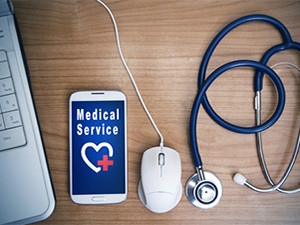
New developments in the smart healthcare industry will reduce the growing demands of taking care of aging patients, both financially and emotionally.
This is according to the latest research by global market research firm TrendForce. The company found that worldwide spending on smart healthcare services such as telemonitoring, diagnostic equipment, assisted living and bio-data tracking will reduce the growing financial pressure of caring for an aging population while raising the standard for medical services.
The findings further revealed smart technology will help transform healthcare services so that medical services will become less expensive, increasing the levels of global spending to US$30 billion in 2018, growing at a compound annual growth rate of 60% from 2016 to 2018.
TrendForce Internet of things analyst Jimmy Liu says these smart technologies reduce the growing financial pressure of caring for an aging population while raising the standard of medical services.
"In the future, ill senior citizens with trouble getting around will be able to consult with their doctors via video calls by themselves, thus saving time for them and their family members as well as saving transportation costs," Liu explains.
He says the growing problem of aging population, development gaps, lack of medical resources in many country's healthcare systems are some of the driving forces behind the increasing healthcare spending by both government and patients.
The research cited the electronic medical systems and disease information platforms which are now available at healthcare facilities globally, have not only done away with the burdensome tasks of writing reports by hand, they also allow doctors to have a thorough understanding of their patients' conditions and medical history in a short time.
Consequently, this significantly reduces the time spent by doctors doing non-medical tasks and decreases the risk of misdiagnosis and treatment errors.
"Various smart devices are now able to track people's health conditions and bio-data in real time and send the information to the cloud-based systems for further analyses. The results of such analyses can be instantly delivered to the device users, providing them with unique insights on how to stay healthy," says Liu.
He added patients will also have more options on where they receive their treatment as hospitals and clinics share their data across advanced information channels.
The devices will be connected to cloud-based platforms and provide the elderly with basic in-home care services. Cloud-based features will also allow the elderly to connect with their local communities, he explained.
In SA yesterday the National Department of Health introduced the mobile application of the Primary Health Care Standard Treatment Guidelines and Essential Medicines List.
The department says this application leverages the capabilities of modern smartphone technology to facilitate efficient, point-of-care access to information which will enable patients to make better clinical decisions and in turn improve their medical condition.
They recently celebrated a one-year Anniversary of Mom-Connect, a mobile app which aims to use mobile health tools and messaging services to create awareness among pregnant women about available health services for their infants.
Taiwan's Ministry of Health and Welfare is currently setting up "Health Cloud," which will encompass treatment, health management, medical care and preventative medicine.
Liu says the building of this platform will be finished between 2015 and 2016 and hospitals, patients and third parties will be able to use the system to access and use a wide range of data and information.
Share